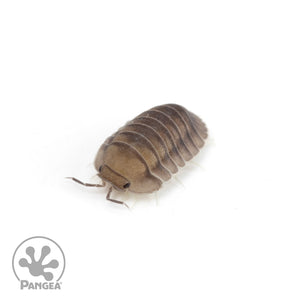Your Cart is Empty


Cubaris sp. ‘Blue Pigeon’ Isopods
$28.99 - $49.99
Due to the Holidays, Isopod and Springtail shipping is currently on hold. We will continue to ship Isopods and Springtails starting 1/6/25.
Introducing the unique Cubaris sp. ‘Blue Pigeon’ Isopods of Thailand. These dark gray isopods have a stunning navy-purple hue. With high humidity requirements and optimal temperatures of 75°-80°, these isopods will add color and interest to any habitat.
Cubaris sp. ‘Blue Pigeon’ Isopods are a species of woodlouse a terrestrial crustacean (Crustacea : Isopoda : Oniscidea).
- Native to Thailand
- Dark Gray with a Navy-Purple hue
-
High humidity requirements
- Optimal temperatures: 75°-80°
- Do not oversaturate the substrate
Bioactive Clean-up Crew
Isopods make an excellent clean-up crew when introduced into bioactive and naturalistic living systems. Their ability to break down organic waste matter throughout their environment helps to maintain healthy habitat conditions. Pangea Leaf Litter Decor, cork bark, rotting wood, excessive food waste, and fecal waste produced by primary inhabitants (i.e. reptiles, amphibians, invertebrates) are all acceptable forms of nutrition for isopods. We do not recommend feeding leaf litter from outdoors that has not been properly treated and sterilized before use. Our wide selection of Pangea Leaf Litter Decor and hardscape wood products make it easier for you to care for your isopods safely!
Bioactive Vivarium Seeding
Provide a sufficient amount of leaf litter and places for isopods to hide. Evenly disperse all contents of the deli cup into your vivarium substrate. Once isopods are introduced, they will find their way into the substrate layer by seeking out humidity zones. Our isopod cultures are also housed with springtails to maintain healthy habitat conditions. Your culture may also contain springtails.
Nutrition
Terrestrial isopods are detritivores, which means they are natural waste consumers. Wild isopods consume rotting wood, leaf litter, and other organic material. Replenishing their habitat often with leaf litter will provide a constant food source and humidity zones to live beneath. Vegetables such as zucchini, squash, potatoes, carrots, pumpkin, and asparagus may be used to supplement their diet. Monitor their food consumption by adding small amounts of freshly sliced vegetables making adjustments as needed. Remove any fuzzy or decaying food.
Master Culture
For successfully setting up a master culture setup of isopods we recommend using 6 qt - 32 qt plastic shoebox tubs. Locking tubs are optional but provide added security. Creating a series of small holes on alternating sides of the container will help to achieve healthy flow and reduce mold. Adding 1-3 inches (more for burrowing species) of pre-soaked Pangea ABG Substrate will provide a suitable substrate. Adding Pangea Sphagnum Moss, Pangea Leaf Litter Decor (the more the better), and pieces of wood or cork bark will help provide multiple layers for isopods to inhabit and feel safe. Mist culture as needed.
*Co-habitation amongst separate species of Isopod is not recommended.*
This animal can only be shipped to the Contiguous US, except LA, OR, and FL because of state regulations.



